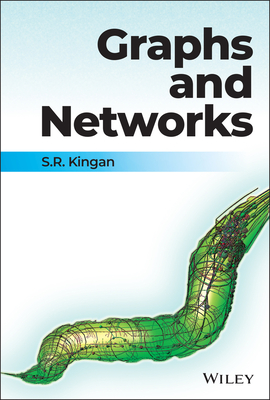商品描述
This book examines the interconnection arrangements that enable Internet users to communicate with one another from computers that are next door or on the other side of the globe. The Internet is a network of networks, owned and operated by different companies, including Internet backbone providers. In order to provide end users with universal connectivity, Internet backbones must interconnect with one another to exchange traffic destined for each other’s end users. Internet backbone providers are not governed by any industry-specific interconnection regulations, unlike other providers of network services; instead, each backbone provider bases its decisions on whether, how, and where to interconnect by weighing the benefits and costs of each interconnection. Interconnection agreements between Internet backbone providers are reached through commercial negotiations in a “handshake” environment. Internet backbones interconnect under two different arrangements: peering or transit. In a peering arrangement, backbones agree to exchange traffic with each other at no cost. The backbones only exchange traffic that is destined for each other’s end users, not the end users of a third party. In a transit arrangement, on the other hand, one backbone pays another backbone for interconnection. In exchange for this payment, the transit supplier provides a connection to all end users on the Internet. The interconnection policies that have evolved in place of industry-specific regulations are examined here, in order to determine the impact of these policies on the markets for Internet services. In the past several years, a number of parties in the United States and abroad have questioned whether larger backbone providers are able to gain or exploit market power through the terms of interconnection that they offer to smaller existing and new backbone providers. In the future, backbones may attempt to differentiate themselves by offering certain new services only to their own customers. As a result, the concern is that the Internet may “balkanize,” with competing backbones not interconnecting to provide all services. This book demonstrates how, in the absence of a dominant backbone, market forces encourage interconnection between backbones and thereby protect consumers from any anti-competitive behavior on the part of backbone providers. While it is likely that market forces, in combination with antitrust and competition policy, can guarantee that no dominant backbone emerges, if a dominant backbone provider should emerge through unforeseen circumstance, regulation may be necessary, as it has been in other network industries such as telephony. This work also examines an international interconnection issue. In recent years, some carriers, particularly those from the Asia-Pacific region, have claimed that it is unfair that they must pay for the whole cost of the transmission capacity between international points and the United States that is used to carry Internet traffic between these regions. After analyzing the case presented by these carriers, the book concludes that the solution proposed by these carriers, legacy international telecommunications regulations, should not be imposed on the Internet. To date, there is no evidence that the interconnection agreements between international carriers result from anti-competitive actions on the part of any backbones; therefore, the market for Internet backbone services is best governed by commercial interactions between private participants.
商品描述(中文翻譯)
本書探討了使互聯網使用者能夠從鄰近的電腦或地球另一端的電腦進行通信的互連安排。互聯網是一個由不同公司擁有和運營的網絡之網,包括互聯網骨幹提供商。為了為最終用戶提供普遍的連接性,互聯網骨幹必須相互互連,以交換針對彼此最終用戶的流量。與其他網絡服務提供商不同,互聯網骨幹提供商不受任何行業特定的互連規範的約束;相反,每個骨幹提供商根據權衡每個互連的利弊來決定是否、如何以及在哪裡進行互連。互聯網骨幹提供商之間的互連協議是通過商業談判在“握手”環境中達成的。互聯網骨幹在兩種不同的安排下進行互連:對等互連(peering)或傳輸(transit)。在對等互連安排中,骨幹同意無償交換彼此的流量。這些骨幹僅交換針對彼此最終用戶的流量,而不是第三方的最終用戶的流量。另一方面,在傳輸安排中,一個骨幹向另一個骨幹支付互連費用。作為這筆付款的交換,傳輸供應商提供與互聯網上所有最終用戶的連接。這裡探討了在行業特定規範的替代下演變而來的互連政策,以確定這些政策對互聯網服務市場的影響。在過去幾年中,美國及國外的多方質疑較大的骨幹提供商是否能夠通過向較小的現有和新骨幹提供商提供的互連條款來獲得或利用市場權力。未來,骨幹可能會試圖通過僅向自己的客戶提供某些新服務來區分自己。因此,擔憂的是互聯網可能會“巴爾幹化”,競爭的骨幹不互連以提供所有服務。本書展示了在缺乏主導骨幹的情況下,市場力量如何促進骨幹之間的互連,從而保護消費者免受骨幹提供商的任何反競爭行為。雖然市場力量結合反壟斷和競爭政策可能保證不會出現主導骨幹,但如果主導骨幹提供商因不可預見的情況出現,則可能需要進行監管,正如在其他網絡行業(如電話業)中所發生的那樣。本書還探討了一個國際互連問題。近年來,一些運營商,特別是來自亞太地區的運營商,聲稱他們必須支付用於在這些地區與美國之間傳輸互聯網流量的傳輸容量的全部成本是不公平的。在分析這些運營商提出的案例後,本書得出結論,這些運營商提出的解決方案,即傳統的國際電信規範,不應強加於互聯網。迄今為止,沒有證據表明國際運營商之間的互連協議是由任何骨幹的反競爭行為所導致的;因此,互聯網骨幹服務的市場最好由私營參與者之間的商業互動來管理。





























